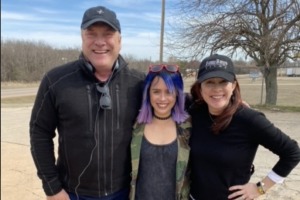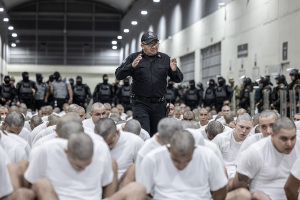Casey Anthony Trial: Cindy Anthony Searched Chloroform on Google Over Tired Dogs
Trying to cast doubt on the state’s case against Casey Anthony, the defense continued questioning witnesses on Thursday about some of the theories behind the prosecution’s claims, ranging from hair samples collected to searches for chlorophyll and chloroform.
The state maintains that Casey suffocated her 2-year-old daughter Caylee with duct tape and chloroform, placed her in the trunk of her Pontiac, and dumped her body in the nearby woods.
Prosecutors presented several expert witnesses during the previous weeks who testified to the presence of chloroform, smell of decay from the trunk, and decomposition of hair found.
But the defense maintains that Caylee accidentally drowned in her grandparents’ swimming pool and is bringing back previous witnesses from the state to poke holes in their theories.
Stephen Shaw, a hair and fiber expert from the FBI, had testified before that a single hair strand found in the trunk of Casey’s Pontiac revealed “post-mortem root banding,” which he stated was unique to deceased individuals only.
Defense attorney Jose Baez, however, tried to discredit Shaw’s theories on Thursday, saying that hair testing was not an exact science.
Showing the jury several slides of hair strands from an experiment Shaw conducted to determine if root banding could occur in a living person – studying 600 hairs collected from 15 living individuals – Baez pointed out that a hair from a living individual submerged in the water for 17 days showed some apparent decomposition as well.
Baez also got the hair expert to admit that there was a mistake made during the testing – an analyst had misidentified two hairs, confusing them from a living person and a dead person.
Shaw, however, testified that the mistake was identified and corrected before the study was turned in.
Dr. Barry Logan also testified on Thursday, taking the stand as an expert in forensic toxicology. He was also a chemistry director at NMS Labs in Pennsylvania and professor at Arcadia University.
Experienced with air sampling, the defense brought on Logan to refute the results of Dr. Arpad Vass from the Oak Ridge Labs, who concluded that a decomposing body was in the trunk of Casey’s car.
Defense attorney Dorothy Clay Sims questioned Logan on the methods used by the doctors from the Oak Ridge laboratory, which was met with objections from the state, saying that the witness was going outside of his expertise, toxicology.
After lengthy sidebars and objections, Logan managed to state that he found the tests conducted by the Oak Ridge research lab – which was not subject to stringent protocols like forensic labs – were marked by several errors and did not follow standards of quality control.
Prosecutor Jeff Ashton asked if Logan could reproduce the test at his own labs if he had a can containing the air samples. Logan admitted he did not have enough information and tools to do so, and had not performed air samples since over 20 years.
Cindy Anthony also took the stand to speak again about the searches that were made on the computer at home. She testified that she searched for chloroform while trying to search for the harmful effects of dogs ingesting chlorophyll after she found that one of her dogs was tired all of the time – perhaps from eating the bamboo plants in her backyard. Her search led her from chlorophyll to chloroform because several types of chlorophyll could produce chloroform.
She also said that she looked up certain injuries after her friend was involved in a car accident.
During cross-examination, prosecutor Linda Drane Burdick asked the witness if she searched for the effects of chloroform 84 times and if she typed “how to make chloroform?” into the search bar. Cindy couldn’t remember and didn’t know what her computer did.
Burdick revealed that Cindy’s work records showed her on the clock at the times of the searches. But the witness revealed that she went home early around that time because it was Casey’s birthday and her anniversary as well.
Detective and computer forensic examiner Sandra Osborne then took the stand and identified deleted Internet files from the Anthony computer. Sergeant Kevin Stenger, a computer forensic examiner, also testified about the searches made on the computer, revealing that when conducting his report he battled with Daylight Savings Time.
The defense pointed out differences in two computer reports about what was searched and deleted on the Anthony computer, but Stenger maintained that the reports were accurate but that programming codes may have interpreted the reports differently.
Baez also highlighted the length of the time spent on the chloroform site – three minutes – while the prosecution pointed out that no one knew what someone was going to do with the information found within those three minutes and that someone could have printed the material. But the defense got Stenger to admit that he was not aware of anyone printing the pages.
Casey, 25, faces the death penalty if convicted for first-degree murder of her child. Though she pleads not guilty, her parents aren’t exactly convinced of her innocence.
Recently, Mark Lippman, a lawyer representing Casey Anthony’s parents, George and Cindy Anthony, told a CNN reporter that his clients do not believe their daughter is innocent.
Cindy and George also purportedly stated that they do not want Casey to receive the death penalty, and that they would do all that they could to avoid her from getting that sentence.
However, hoping to retract his controversial statement, Lippman later stated to CNN that the Anthony family “simply [wanted] justice” and the truth about what happened to their granddaughter.





























